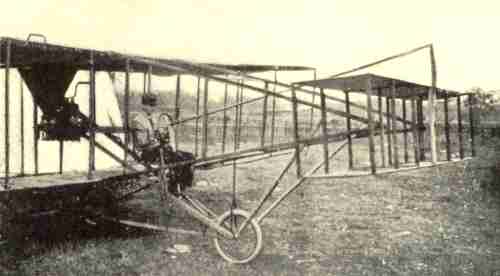| The Aeronautic Society of New York |
|
his labor and his great outlay. To-day, more than ever, it is up to the men of wealth here, who pride themselves on their love of sport, to establish these prizes and induce- ments. But, instead of doing this, they are leaving all the help to be given by the poor showman; and, while complaining of the existence of the showman, those who claim to "control" the coming sport are laving it dependent for its financial support upon cities that seek publicity and concerns that desire notoriety. |
|
MEANWHILE, work at Morris Park by the members of the Society has been pro- gressing with ever increasing energy and volume. From its excellent behavior in flight, much was expected from the glider of Riley E. Scott. It was of an entirely novel design, and seemed to possess remarkable stability. During practice however, a few days after the exhibition, Mr. Scott happened to slip in his recumbent position on the machine, and the apparatus, thrown out of balance, fell vio- lently and was entirely wrecked, though without injury to Mr. Scott. |
 |
|
A new biplane was constructed by François Raiche, in association with C. M. Crout, who built the motor. This machine was not unlike the Society's in general design, but had some slight improvements, such as shock absorbers, and brakes on the rear wheels instead of only on the front one. Variations were also made in the measurements, so that the machine was smaller, and, it was hoped, would be faster. It proved to be the first machine built at Morris Park to get off the ground. It was tried out early in Sep- tember, and Mr. Crout, who was operating it, made a successful flight of about fifty feet. Subsequently this machine was one of the features of the Aeronautical Exposition at Madison Square Gardens, and, later, went to Danbury, Conn., Fair. C. N. Newcomb, of West Palm Beach, Fla., another member who came from a great distance to obtain the advantages offered by the Society, built an elaborate appartus con- sisting of five pairs of oscillating wings, for the purpose of trying out certain data on a large scale, and then returned to Florida to rebuild in the light of the knowledge gained. Guy Hogan, of Muelle San Carlos, Costa Rica, came still further to pick up hints and try out his designs, and then returned home to build, after some months of experience in the workshops at the Park. |
|
|